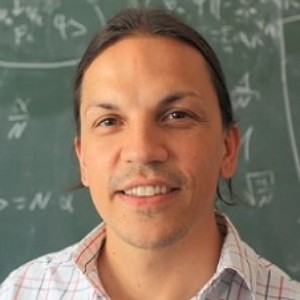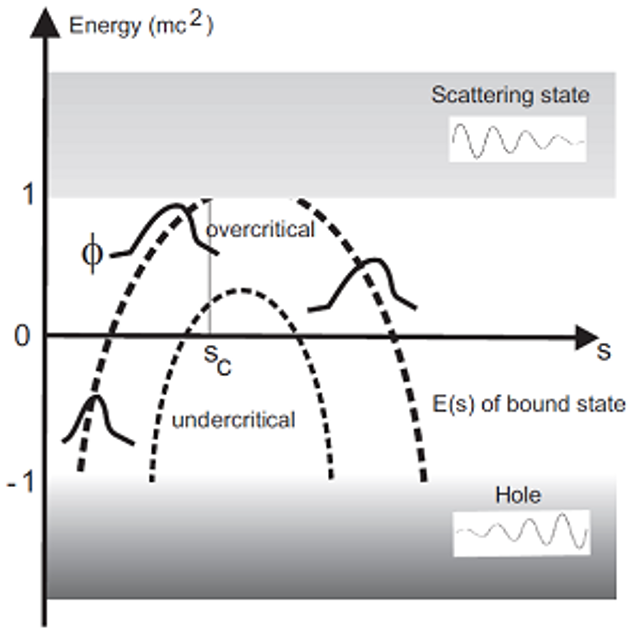
Higher Order Corrections to the Mean-Field Description ofthe Dynamics of Interacting Bosons
L. Boßmann, N. Pavovic, P. Pickl, A. Soffer
Journal of Statistical Physics 178 (6), 1362–1396 (2020).
In this paper, we introduce a novel method for deriving higher order corrections to the mean-field description of the dynamics of interacting bosons. More precisely, we consider thedynamics ofNd-dimensional bosons for largeN. The bosons initially form a Bose–Einsteincondensate and interact with each other via a pair potential of the form(N−1)−1Ndβv(Nβ·)forβ∈[0,14d).WederiveasequenceofN-body functions which approximate the true many-body dynamics inL2(RdN)-norm to arbitrary precision in powers ofN−1. The approximatingfunctions are constructed as Duhamel expansions of finite order in terms of the first quantisedanalogue of a Bogoliubov time evolution.

Derivation of the Bogoliubov Time Evolution for a Large Volume Mean-Field Limit
S. Petrat, P. Pickl, A. Soffer
Annales Henri Poincare 21 (2), 461–498 (2019).
The derivation of mean-field limits for quantum systems at zero temperature has attracted many researchers in the last decades. Recent developments are the consideration of pair correlations in the effective description, which lead to a much more precise description of both spectral properties and the dynamics of the Bose gas in the weak coupling limit. While mean-field results typically lead to convergence for the reduced density matrix only, one obtains norm convergence when considering the pair correlations proposed by Bogoliubov in his seminal 1947 paper. In this article, we consider an interacting Bose gas in the case where both the volume and the density of the gas tend to infinity simultaneously. We assume that the coupling constant is such that the self-interaction of the fluctuations is of leading order, which leads to a finite (nonzero) speed of sound in the gas. In our first main result, we show that the difference between the N-body and the Bogoliubov description is small in L2 as the density of the gas tends to infinity and the volume does not grow too fast. This describes the dynamics of delocalized excitations of the order of the volume. In our second main result, we consider an interacting Bose gas near the ground state with a macroscopic localized excitation of order of the density. We prove that the microscopic dynamics of the excitation coming from the N-body Schrödinger equation converges to an effective dynamics which is free evolution with the Bogoliubov dispersion relation. The main technical novelty are estimates for all moments of the number of particles outside the condensate for large volume, and in particular control of the tails of their distribution.

A Mean Field Limit for the Hamiltonian Vlasov System
R. Neiss, P. Pickl
Journal of Statistical Physics 178 (2), 472–498 (2019).
The derivation of effective equations for interacting many body systems has seen a lot of progress in the recent years. While dealing with classical systems, singular potentials are quite challenging (Hauray and Jabin in Annales scientifiques de l’École Normale Supérieure, 2013, Lazarovici and Pickl in Arch Ration Mech Anal 225(3):1201–1231, 2017) comparably strong results are known to hold for quantum systems (Knowles and Pickl in Comm Math Phys 298:101–139, 2010). In this paper, we wish to show how techniques developed for the derivation of effective descriptions of quantum systems can be used for classical ones. While our future goal is to use these ideas to treat singularities in the interaction, the focus here is to present how quantum mechanical techniques can be used for a classical system and we restrict ourselves to regular two-body interaction potentials. In particular we compute a mean field limit for the Hamilton Vlasov system in the sense of (Fröhlich et al. in Comm Math Phys 288:1023–1058, 2009; Neiss in Arch Ration Mech Anal. https://doi.org/10.1007/s00205-018-1275-8) that arises from classical dynamics. The structure reveals strong analogy to the Bosonic quantum mechanical ensemble of the many-particle Schrödinger equation and the Hartree equation as its mean field limit (Pickl in arXiv:0808.1178v1, 2008).

Derivation of the Time Dependent Gross–Pitaevskii Equation in Two Dimensions
M. Jeblick, N. Leopold, P.Pickl
Communications in Mathematical Physics 372 (1), 1–69 (2019).
We present microscopic derivations of the defocusing two-dimensional cubic nonlinear Schrödinger equation and the Gross–Pitaevskii equation starting from an interacting N-particle system of bosons. We consider the interaction potential to be given either by Wβ(x)=N−1+2βW(Nβx), for any β>0, or to be given by VN(x)=e2NV(eNx), for some spherical symmetric, nonnegative and compactly supported W,V∈L∞(R2,R). In both cases we prove the convergence of the reduced density corresponding to the exact time evolution to the projector onto the solution of the corresponding nonlinear Schrödinger equation in trace norm. For the latter potential VN we show that it is crucial to take the microscopic structure of the condensate into account in order to obtain the correct dynamics.

Bogoliubov corrections and trace norm convergence for the Hartree dynamics
D. Mitrouskas, S. Petrat, P. Pickl
Reviews in Mathematical Physics 31 (8), 1950024 (2019).
We consider the dynamics of a large number N of nonrelativistic bosons in the mean field limit for a class of interaction potentials that includes Coulomb interaction. In order to describe the fluctuations around the mean field Hartree state, we introduce an auxiliary Hamiltonian on the N-particle space that is similar to the one obtained from Bogoliubov theory. We show convergence of the auxiliary time evolution to the fully interacting dynamics in the norm of the N-particle space. This result allows us to prove several other results: convergence of reduced density matrices in trace norm with optimal rate, convergence in energy trace norm, and convergence to a time evolution obtained from the Bogoliubov Hamiltonian on Fock space with expected optimal rate. We thus extend and quantify several previous results, e.g., by providing the physically important convergence rates, including time-dependent external fields and singular interactions, and allowing for more general initial states, e.g., those that are expected to be ground states of interacting systems.

